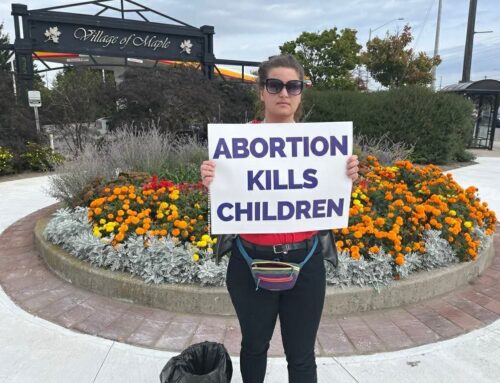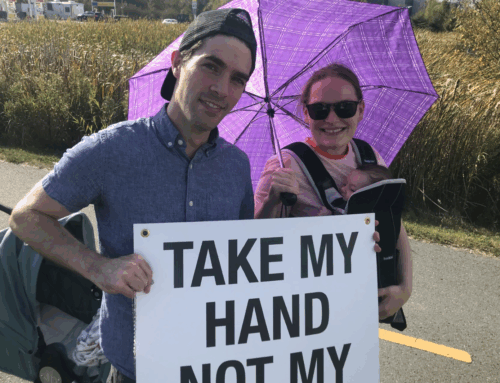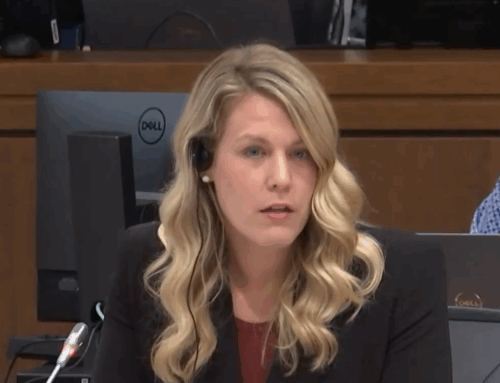Paul Tuns:
The World Health Organization released an updated, 210-page “Abortion Care Guidelines,” calling for the removal of all legal and regulatory barriers to accessing abortion, greater use of telemedicine abortion to reach people in remote and rural locations, and the elimination of conscience protection rights for healthcare professionals who oppose abortion on moral or religious grounds.
Claiming that there are 25 million unsafe annually – “unsafe” being a euphemism for illegal – Craig Lissner, WHO’s acting director of Sexual and Reproductive Health and Research, said that “being able to obtain a safe abortion is a crucial part of healthcare,” asserting that maternal death and injury is preventable when abortion is legal, and explaining “that’s why we recommend women and girls can access abortion and family planning when they need them.”
The WHO report claims that unsafe abortion results in 39,000 deaths and millions of complications resulting in hospitalization annually. Most of those deaths and complications occur in Africa and Asia. More than 20 years ago, American Life League (ALL) released a study debunking the claims at the time of up to 200,000 abortion deaths, saying the number was actually under 10,000. The ALL report noted that in his 1970 book Abortion, activist Malcolm Potts admitted, “Those who want the law to be liberalized will stress the hazards of illegal abortion and claim that hundreds, or thousands, of women die unnecessarily each year when the actual number is far lower.”
“Abortion Care Guidelines” offers more than 50 policy recommendations including allowing healthcare workers other than doctors to commit abortions, increasing access to abortion pills and ensuring they are free to women seeking abortions, eliminating waiting periods for reflection before obtaining an abortion, banning parental or spousal approval or notification laws, and the removal of all gestational limits. Regarding the removal of conscientious protection laws and regulations, the guidelines state: “conscientious objection in abortion provision may become indefensible.” These “barriers” the report complained, “can lead to critical delays in accessing (abortion) and put women and girls at greater risk of unsafe abortion, stigmatization, and health complications.” Bela Ganatra, head of WHO’s Prevention of Unsafe Abortion Unit, said it was “vital” that abortion be “safe in medical terms,” but insisted “that’s not enough on its own” as she called for women and girls who seek abortions to be “treated with dignity and without stigma or judgement.”
In a totally new section for WHO’s guidelines, there is a chapter on “best practices for telemedicine” learned from easing access to doctors through telephone or online consultations and mailing abortion pills by post during the pandemic, and other recommendations for healthcare workers to make access to abortion services simpler for patients. In Spring 2020, at the onset of the COVID-19 pandemic and state-imposed restrictions, the WHO included “comprehensive abortion care” in its list of “essential health services,” encouraging governments to expand the provision of telemedicine abortion to ensure women could easily access abortion during lockdowns, but this is the first time it has been included in its semi-regularly issued guidelines. The last time the guidelines document was updated was in 2012.
Upon launch of the guidelines report, WHO issued a statement saying it “will support interested countries to implement these new guidelines and strengthen national policies and programmes related to contraception, family planning and abortion services, helping them provide the highest standard of care for women and girls.”
The pro-abortion Center for Reproductive Rights hailed the guidelines as WHO’s “most progressive guidance to date.” Nancy Northrup, president of the Center, said, “It is time now for governments, health systems, and others to take heed of the WHO guidance and implement its recommendations so that the right to access abortion is fully realized and human rights are respected.”
The International Planned Parenthood Federation, who partnered with WHO to develop the report, also welcomed the guidelines, saying it was “critical for ensuring the provision of quality abortion care for all women, girls, and people who can become pregnant.” It highlighted calls for allowing a wide range of health workers to commit abortions, increased access to abortion pills, and the promotion of telemedicine abortions as important recommendations to increase the number of abortions carried out globally. It also applauded recommendations to remove all legal and policy barriers, calling them “tantamount to reproductive coercion.” IPPF director general Alvaro Bermejo said the guidelines “are vital for helping us reach (the) goal” of “ensuring that every person can choose whether or not to be pregnant.”
Rebecca Oas of the Center for Family and Human Rights critiqued the report in a March 17 report. She noted “The fact that abortion is not an internationally recognized human right is ignored by this guidance, despite decades of failed attempts to create consensus around the creation of such a right.” Oas said, “Instead, the guidance draws heavily on the work of treaty monitoring bodies and special rapporteurs … to insinuate a right to abortion into international human rights law.” She noted that numerous global agreements state that establish “abortion was not a right and that its legal status was for individual countries to determine.”
Oas also said the new guideline document “marks yet another step by the global health agency away from international consensus and the accountability that comes with it, in favor of aligning itself with independent experts who for decades have disregarded the boundaries of their mandates.”
Matthew Wojciechowski, vice president of Campaign Life Coalition, told The Interim that he is not surprised by the updated WHO guidelines but is disappointed that they employ “tired lies about the number of abortion-related deaths” and “assert the fiction that abortion is an international human right.” He said that pro-abortion governments such as Justin Trudeau’s will likely “use this abortion manual to expand abortion access, trample on conscience rights, and ensure that abortion-on-demand is the law of the land everywhere.”
Obianuju Ekeocha, president of Culture of Life Africa, told EWTN, “we’ve known for many years now that the World Health Organization has been very well aligned with pro-abortion countries in the west, but never have we seen this kind of push.”




